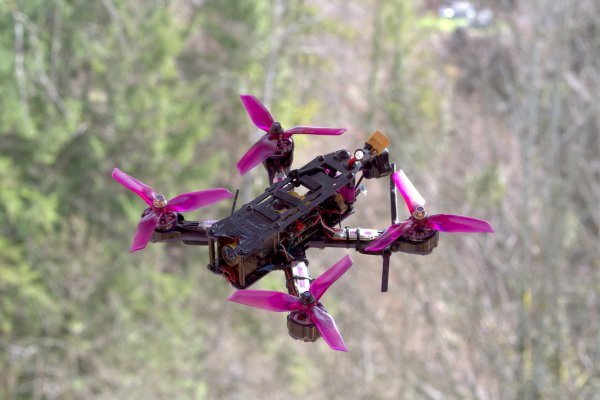Duality

In Duality, media artist Roland Jankowski addresses the duality of technological achievements. Specifically, using drones - which can be used as warlike actors or messengers of peace, depending on their utility, application and reasoning. In this way, the artist illustrates that it always depends on how technology is used, similar to the Drone Aviary project by the artist:inside collective "Superflux" in this exhibition.
On a screen, a live image of the exhibition space can be seen through the eyes of a hobby drone, assembled DIY-style by the artist with electronic components from China. The drone hovers in the room set in motion by a fan and monitors the movements of the visitors in real time. As Jankowski writes about the artwork: "The resulting image is sent through the ether via radio waves - and is repeatedly disturbed by short fragments of recordings of various kamikaze drones. These military drones use the same free software that was originally developed purely for civilian purposes. The material cost of under €150 for the aircraft makes it a very cheap weapon."
Duality invites the audience to question the use of drones and highlights to us the importance of thinking through both positive and negative uses of technology. In the five-minute drone performance Guardian Angel, the artist cynically thematises the drone as a guardian angel watching over the performance audience. The live image of the performance audience is transmitted in real time to a screen in the exhibition. The visitors become voyeurs of their own surveillance. The real-time transmission opens up the temporal perspective of the filmed and simultaneously transmitted image.
Using media-artistic tools, the attempt is made to produce statements about scientific phenomena and technology via works of art. In this way, Jankowski alienates the drone - it is no longer a technological product but an artistic tool or object of an art performance and explicitly follows the artist's instructions for action. Finally, Jankowski reminds us of the question of decision-making, which will always remain a human decision, even with the currently most intelligent AI: How do we use technology? How do we write 0 and 1 so that the AI could become a prosthesis that helps humans solve problems via computing power instead of creating them?
The term duality describes the existence of two interconnected but at the same time different concepts. These concepts can often be considered as opposites or complements, which together allow for a more complete understanding of a phenomenon or idea.
It shows us that technology is not necessarily good or bad, but that it depends on its use. We need to become aware of the responsibility we have as a society to ensure that drones are only used for positive purposes and not for military or other negatively charged purposes.
What can be seen is a live image of the exhibition space through the eyes of a hobby drone that was built by the artist using electronic components from China. This image is sent through the ether via radio waves and is repeatedly disrupted by short fragments of recordings of various kamikaze drones.
These military drones use the same free software¹ that was originally developed purely for civilian purposes. The material costs of less than €150 for the aircraft make it a very cheap weapon against people and armored vehicles – against which there are hardly any defense options. It is feared that the use of small and inexpensive drones will be massively promoted in most military units worldwide in the coming years.
The artwork invites us to question our own perspective on the use of drones and to engage in a broader discussion about their use. It illustrates how important it is to understand the duality in the application of technology and to consider the consequences of our actions.
¹https://betaflight.com/
https://github.com/inavFlight/inav
